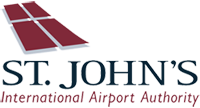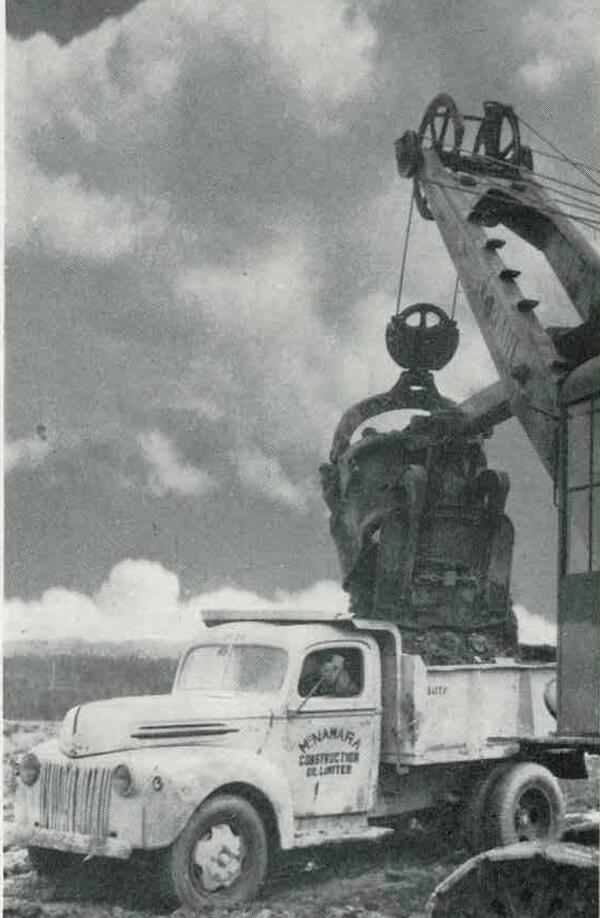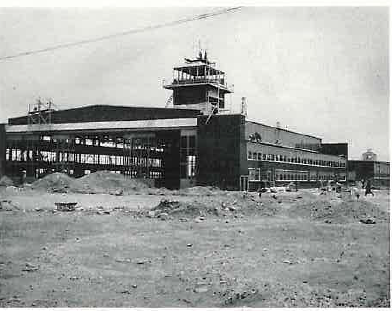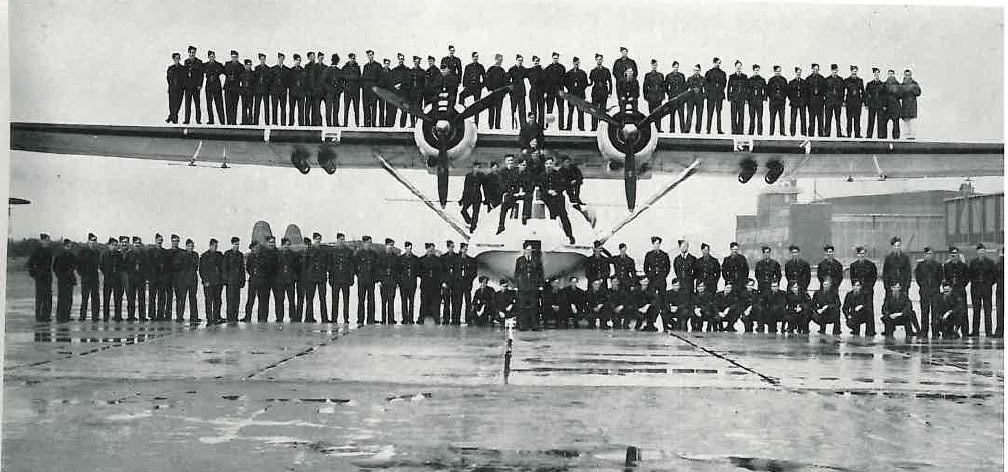History
1939 – Concern expressed in the Canadian Parliament for the security of Newfoundland in the event of a German raid or attack. It was felt that a permanent airfield defense facility was needed.
1940 – The Canadian Government agreed to construct an air base near St. John’s. A site was chosen near the community of Torbay, against the advice of local experts who preferred Cochrane Pond, to accommodate Royal Canadian Air Force (RCAF) operations.
1941 – McNamara Construction Company began construction on the runway. At a cost of approximately 1.5 million dollars, two runways, taxiways, aprons, hangars and other facilities were built and in operation by the end of 1941. The RCAF officially opened Torbay Airport on December 15th, 1941. It was jointly used by the RCAF, Royal Air Force (RAF), and the United States Army Air Corps until December 1946.
On October 18th, 1941, three American B-17 Flying Fortresses and one RCAF Digby made the first unofficial landing on the only serviceable runway available. The runways were still under construction and concern was expressed about the possible hazards to both civilian and military personnel from such unauthorized landings. Later that month a British Overseas Airways Corporation B-24 Liberator en route from Prestwick, Scotland, to Gander, made the first officially sanctioned landing during a weather emergency. A snowstorm, which prevented the landing at Gander, also closed down airports from New York to Montreal. As fuel was running low it was decided that one of the runways at Torbay could be used even though work on it was not completed. Due to the fact that the airport lacked instrument landing aids at the time, the pilot, Captain S.T.B. Cripps, used local radio station VONF as a homing beacon. The aircraft suffered minor nose wheel damage on landing but no injuries to its five crew and fifteen passengers were reported.
November 1941 saw the arrival of No. 11 Bomber Reconnaissance (BR) Squadron, the first RCAF Squadron to take up duties at the Torbay Air Base. Additional RCAF support arrived before the end of 1942. In April of that year Lysander aircraft of No. 5 Coastal Artillery Co-operation Flight, which was later renamed No. 1 Composite Detachment in July 1943, took up duties at Torbay. Until its disbandment in June 1945, the Flight busied itself with search and rescue, target towing, photo reconnaissance, blackout observation, dive bomb and machine gun practice, mail drops, and once late in December 1944, a turkey drop over an RCAF radar site on Allan’s Island on Newfoundland’s south coast. In May 1942, No. 11 (BR) Squadron ceased anti-submarine operations at Torbay and was replaced by No. 145 (BR) Squadron, RCAF. In June 1942, Hurricane fighters and Harvard trainers of No. 125 Fighter Squadron, RCAF, arrived at Torbay. One event of note that occurred during 125 Squadron’s tenure at Torbay involved some British made Spitfire aircraft. Late in December 1942, the S.S. Empire Kingsley, en route from England to Africa with a deck load of aircraft, diverted to St. John’s due to inclement weather. Three severely damaged Spitfires were brought to Torbay where the Station Maintenance Wing salvaged enough parts to build one aircraft. Spitfire ER824 was test flown in March 1943 by 125 Squadron’s Commanding Officer, Squadron Leader R.W. Norris. Once word got out that there was a serviceable Spitfire at Torbay, Air Force officials ordered it shipped overseas. Before ER824 left, however, the mechanics who rebuilt her stenciled the name “Miss Torbay” on the engine cowling. “Miss Torbay” survived the war, ending its days with 17 Group Communications Squadron, RAF. The augmentation of anti-submarine forces at Torbay continued throughout 1943 and 1944 with the arrival of No. 5 (BR), 113 (BR) and 160 (BR) RCAF.

On June 3rd, for the last time, St. John’s residents saw the familiar parade of air force blue uniforms as the RCAF held its final formal march. Following divine services at the Church of England Cathedral and St. Bonaventure’s College, the parade moved to the War Memorial where the RCAF’s Air Officer Commanding in Newfoundland, Air Commodore F.G. Wait, took the salute at the march past.
The United States Air Force also had personnel at Torbay, mainly in the fields of communication and transportation, in addition to, and support of, their base at Fort Pepperell.
On April 1st ,1946, the airport became a civilian operation under the jurisdiction of the Canadian Department of Transport. Confusion was caused by the presence of American military personnel at a civilian airport and consequently on April 1st, 1953, control was turned back to the Department of National Defence. On April 15th, 1953, the RCAF Station at Torbay was reactivated and RCAF personnel started to move in and began providing the necessary administration and operation of the facility to support the mission of its co-tenant, the United States Air Force. Early in 1954 a rental agreement was signed between the USAF and the RCAF and the USAF acquired use of additional buildings. The 6600th Operations Squadron of the USAF was activated in July 1953 and moved into existing Torbay Airport facilities. The USAF rented over thirty buildings at a cost of over $210,000 per year. The USAF operations at Torbay Airport, from 1953 to 1958 – when the Northeast Air Command was deactivated, were notable achievements. Thousands of tons of cargo were handled by Torbay in support of the many bases and satellite stations throughout the Command.
The Transport Department maintained control over the terminal building. The facility remained R.C.A.F. Station Torbay until April 1st, 1964, when it was returned to the jurisdiction of the Transport Department under the name St. John’s Airport.
The first terminal building at the site was constructed in 1943. A small wooden structure, it was replaced by a larger brick building in 1958.
In 1981, the terminal building housed the offices of the airport manager and staff. There were ticket offices for Eastern Provincial Airways (EPA), Air Canada, Gander Aviation and Labrador Airways, a large waiting area, a secure departure lounge, a self-serve restaurant, a licensed lounge, a number of food concessions and rent-a-car facilities. In 1981 a small museum was being prepared to house the story of aviation in Newfoundland and related memorabilia.
The control tower originally constructed during the war burned down in an extensive fire at the airport on March 17th, 1946, which caused one and a half million dollars worth of damage. Construction did not begin on a new tower until 1951; it was then opened in June 1952. A new Tower/Communications Building replaced that structure in March 1976. The tower was equipped with radio navigation and landing aids including precision approach radar, non-directional beacon and VHF omni-directional range.
The first commercial air service at the facility went into operation on May 1st, 1942, with the arrival at Torbay of a Trans-Canada Airlines (T.C.A.) Lockheed Lodestar aircraft with five passengers and a three-member crew on board. T.C.A. had not wanted to provide the service to St. John’s because they thought it would not be economically viable. It was only after a United States company showed interest in operating the service that T.C.A. agreed to do it. Air Canada, the successor of T.C.A., and Eastern Provincial Airways were the major airlines operating out of St. John’s Airport in 1981. They provided daily service to other parts of Newfoundland and Labrador and to mainland Canada.
Although the airfield was not used as much as Argentia, Gander, Stephenville, and Goose Bay Airports in the movement of large numbers of aircraft to England, it was still busy. The Royal Air Force had its own squadron of fighters, surveillance and weather aircraft stationed there. The RCAF personnel strength on the station during the peak war years was well over 2000. Through an agreement between the U.S. and Canadian governments early in 1947, the United States Air Force took over the use of the airport facilities and utilized about ten of the buildings located there. The US Military Air Transport Service (MATS) needed Torbay Airport in order to complete its assigned mission at that time. Maintenance of the airport and facilities was done by the Canadian Department of Transport.
St. John’s International Airport ’s strong military ties continue to the present day. Though it operates as a civilian airport, moving close to 1.6 million passengers per year, approximately 1,300 military aircraft stop at this airport each year to refuel or for crew rests.
The Airport Authority and 150 RCAF (North Atlantic) W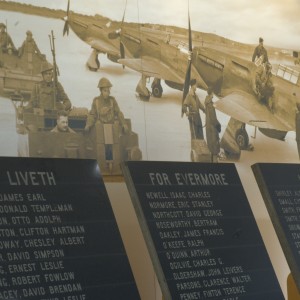 ing of the Air Force Association of Canada have preserved the military history of the airport in a display that is located on the main level of the Airport Terminal Building. The display features photos and models of the aircraft associated with the military operation at what was formerly called RCAF Torbay. It also holds a memorial to the Newfoundlanders who died during WWII in the service of the Allied Air Forces and a memorial to those Canadian and American airmen and women who lost their lives while either stationed at or traveling through St. John’s International Airport (Torbay), then considered an overseas post.
ing of the Air Force Association of Canada have preserved the military history of the airport in a display that is located on the main level of the Airport Terminal Building. The display features photos and models of the aircraft associated with the military operation at what was formerly called RCAF Torbay. It also holds a memorial to the Newfoundlanders who died during WWII in the service of the Allied Air Forces and a memorial to those Canadian and American airmen and women who lost their lives while either stationed at or traveling through St. John’s International Airport (Torbay), then considered an overseas post.
